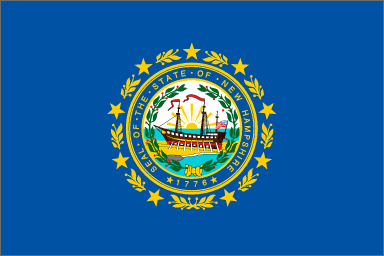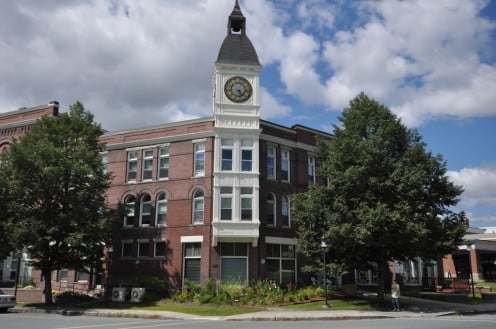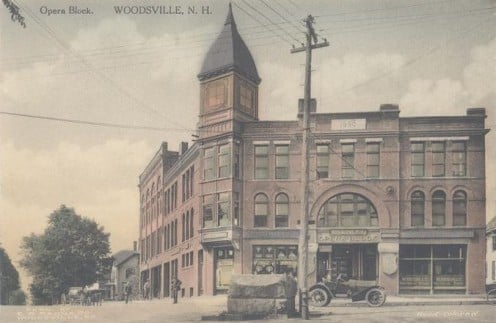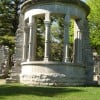- HubPages»
- Travel and Places»
- Visiting North America»
- United States
Visiting the Opera Building, Woodsville, New Hampshire: A Romanesque Revival Psychological Crossroads Dating From 1890


Well angled history
This structure, known variously as the Opera Block or the Opera Building (1), Woodsville (2), New Hampshire, is at a highly significant location.
Firstly, some New Hampshire geography and history. The traditional western boundary of the New Hampshire colony — subsequently the State of New Hampshire — was the Connecticut River, which runs roughly north-south. West of the Connecticut is what in Colonial days was known as the New Hampshire Grants (although this territory was also administered at various times by New York).
The Opera Building is situated at the intersection of Monroe Road and Central Street (Route 302), and curiously the crowning external feature of the building is its tower which is built at an angle, equidistant to both of these roads. Being also on the brow of a hill, the Opera Building and its precisely angled tower is arguably among the most conspicuous landmarks in Woodsville.
Bearing in mind that Monroe Road runs roughly parallel to the Connecticut River — the State's western boundary with Vermont and that Central Street after a fairly short distance crosses a bridge over the Connecticut River into Vermont, one soon gets a sense that the Opera Building's location and angle represent deeply significant aspects of state history and local geography: indeed, its spatial dominance speaks volumes in the local built environment. The building is indeed situated at a geographical and psychological crossroads.
And so the Opera Building's tower, the crowning feature of the structure, is angled to 'belong' both to the north-south historical western boundary of New Hampshire and to the direction of the crossing over the Connecticut River, the boundary itself.
This psychological pivot at the brow of a hill in Woodsville gives the building a unique character in its spatial radiation.
Other features of the building include variously sized Syrian window arches at the second storey, emphasizing the structure's Romanesque style (bearing in mind also that the 1890s were a period when Richardson Romanesque was especially popular for new buildings in North America). The Opera Building dates from 1890.
The interior of the building contains a large concert hall — hence the structure's name. A commercial occupant included for many decades a family owned pharmacy.
Woodsville is situated in the town of Haverhill, in Grafton County, New Hampshire.
December 3, 2018
Notes
(1) https://en.wikipedia.org/wiki/Woodsville_Opera_Building
(2) https://en.wikipedia.org/wiki/Woodsville,_New_Hampshire

Also worth seeing
Woodsville, New Hampshire, lies at the confluence of the Connecticut and Ammonoosuc Rivers; the lattice truss Haverhill Bath Covered Bridge, dating from 1829 but recently refurbished, crosses the Ammonoosuc at Woodsville, over the rapids of which the bridge, now open only to pedestrians, offers fine views.
The Frost Place, Franconia (distance: 20.6 miles / 33.1 kilometres) is a museum and poetry centre based in the former home of poet Robert Frost (1874-1963).
...
How to get there:
Burlington International Airport (distance to Woodsville, New Hampshire: 74.6 miles / 120 kilometres), where car rental is available from various companies, is served by a variety of airlines, including Porter, JetBlue, Delta and United, which fly to a number of North American connections. Woodsville lies close to the intersection of the I-91 with Route 302. Please check with the airline or your travel agent for up to date information. Visitors to the United States are advised to refer to appropriate consular sources for any special border crossing arrangements which may apply to citizens of certain nationalities.
MJFenn is an independent travel writer based in Ontario, Canada.
Other of my hubpages may also be of interest
- Visiting the Missisquoi National Wildlife Refuge, Swanton, Vermont: With Views of Mount Mansfield, G
The Missisquoi National Wildlife Refuge and Mount Mansfield, in Vermont's Green Mountains, are both special places: the Missisquoi flows into Lake Champlain; the Green Mountains are a state leitmotif. - Visiting Some Historical Plaques at Alburgh, Vermont: From Samuel de Champlain to Intercontinental B
As might be expected, the log cabin Welcome Center at Route 2, West Alburgh, Vermont, is a mine of useful information for visitors, especially out-of-state and Canadian ones, to the area of northern Vermont where Alburgh (1), on a peninsula in Lake..



